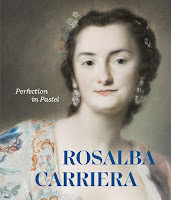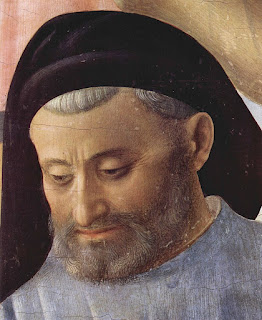Catastrophic flood may have killed 2,500
Prone to earthquakes because of its unfortunate geology, Italy has suffered many natural disasters over the centuries, yet the horrific catastrophe that took place on this day 58 years ago in an Alpine valley about 100km north of Venice, killing perhaps as many as 2,500 people, was to a significant extent man-made. The Vajont Dam Disaster of October 9, 1963 happened when a section of a mountain straddling the border of the Veneto and Friuli-Venezia Giulia regions in the Friulian Dolomites collapsed in a massive landslide, dumping 260 million cubic metres of forest, earth and rock into a deep, narrow reservoir created to generate hydroelectric power for Italy's industrial northern cities. The chunk of Monte Toc that came away after days of heavy rain was the size of a small town yet within moments it was moving towards the water at 100km per hour (62mph) and hit the surface of the reservoir in less than a minute. The effect was almost unimaginable. Within seconds, 50 million cubic metres of water was displaced, creating a tsunami that rose to 250m high. The dam held, but the colossal volume of water had nowhere to go. Read more…
______________________________________
Gabriele Falloppio – anatomist and physician
Professor made key discoveries about human reproduction
Gabriele Falloppio, one of the most important physicians and anatomists of the 16th century, died on this day in 1562 in Padua. Often known by his Latin name Fallopius, he lived only 39 years yet made his mark with a series of discoveries that expanded medical knowledge significantly. He worked mainly on the anatomy of the head and the reproductive organs in both sexes and is best known for identifying the tubes that connect the ovaries to the uterus, which are known even today as Fallopian tubes. He also discovered several major nerves of the head and face, and identified many of the components of the hearing and balance systems. Falloppio described all of the findings of his research in a book published a year before he died, entitled Observationes anatomicae. Educated initially in the classics, the death of his father plunged his family – noble but not wealthy – into financial difficulties, prompting him to pursue the security of a career in the church, becoming a priest in 1542. He served as a canon at the cathedral in his native Modena. Falloppio retained an ambition to study medicine, however, and when the family’s finances had improved sufficiently he enrolled at the University of Ferrara. Read more…
_____________________________________
Stefanina Moro – partisan
Amazing courage of a young girl who protected her compatriots
Brave teenager Stefanina Moro, who served as a partisan during World War II, died on this day in 1944 in Asti as a result of injuries inflicted upon her by Nazis, who caught her and tortured her for information. Stefanina, who was born in Genoa in 1927, is thought to have been between 16 and 17 years old when she died of her wounds in a hospital in Asti. After growing up in the Quezzi district in Genoa, Stefanina became a partisan and later served as una staffetta - a courier - responsible for maintaining communications between groups of partisans to help the Italian resistance movement during the war of Italian liberation. Sadly, in 1944, Stefanina was captured by Nazis and taken to the Casa del Fascio - the local Fascist party headquarters - in Cornigliano, about seven kilometres (4 miles) west of Genoa, to be interrogated. Stefanina was then moved to the Casa dello Studente in Corso Gastaldi, a former university building that was being occupied by the Nazis and had been turned into a prison. Prisoners were routinely tortured there under the command of an SS officer, Friedrich Engel, who would come to be known as the ‘Executioner of Genoa’ or the ‘Butcher of Genoa.’ Read more…
______________________________________
Agostina Segatori – artist’s model and restaurateur
Van Gogh paid Italian café owner with works of art in exchange for meals
Agostina Segatori, whose Italian looks inspired many of the top French painters in the 19th century, was born on this day in 1841 in Ancona, a seaport city in the region of Le Marche. Little is known about Agostina’s early life, but she had moved to Paris before she was 20, because she posed for Edouard Manet’s painting, L’Italienne there in 1860. Over the next three decades she was to model for Edouard Joseph Dantan, Jean-Baptiste Corot, Jean-Leon Gerome, Eugene Delacroix and Vincent van Gogh. Agostina had a relationship with Edoard Joseph Dantan that lasted 12 years. Dantan is reputed to have referred to her as Madame Segatori-Morière, which implied she was married to a Monsieur Morière. She had an illegitimate son, Jean-Pierre, with Dantan. Their relationship was stormy and ended in 1884. Despite having a failed relationship and becoming a single mother, Agostina continued to work as an artist’s model and carefully saved the money she earned. In 1885 she invested her savings in a café with an Italian theme, the Café du Tambourin. It became a hotspot for artists, writers and critics. Read more…
_______________________________________
Fra’ Filippo Lippi - Renaissance painter
Mentor of Botticelli who led life of scandal
The controversial 15th century painter Fra’ Filippo Lippi, who famously eloped with a nun who had agreed to pose for him at a Dominican monastery in Prato, died on or close to this day in 1469 in Spoleto, a city in Umbria then part of the Papal States. He was aged 62 or 63. Because of the scandalous nature of his life, there was speculation after his death that he had been poisoned, possibly by relatives of Lucrezia Buti, the nun who fell for his charms and was the mother of two children by him. Aside from his colourful private life, Lippi was an important figure in the development of painting. Himself influenced by Masaccio and Fra’ Angelico, he developed a signature style of his own that was colourful and decorative and characterised by clarity of expression. His own influence was seen in the works of his pupil Sandro Botticelli and his son, Filippino Lippi. Born in Florence in 1406, the son of a butcher, Lippi was orphaned when he was two years old. Until he was eight, he lived with an aunt, who then placed him in a Carmelite convent. In 1420 he entered the community of friars at the Monastery of Santa Maria del Carmine in Florence. Read more…
_______________________________________
Salimbene di Adam – historian
Friar's records provided important information on history of Italy
Salimbene di Adam, a Franciscan friar, whose yearly chronicles became a valued source for historians, was born on this day in 1221 in Parma in Emilia-Romagna. Sometimes also referred to as Salimbene di Parma, he was the son of Guido di Adam, a wealthy Parma citizen. Salimbene entered the Franciscan Order in 1238 and served his novitiate in the Monastery of Fano on the Adriatic coast. As Fra Salimbene, he led a wandering existence and never held any office in his order. He transferred from one monastery to another, meeting notable people and becoming an eyewitness to historic events. In the 1240s he travelled to Lucca, Pisa and Cremona, and also visited France. On his return to Italy in 1248 he went to Ferrarra where he stayed for several years. But he then went on his travels again, staying in Franciscan convents in northern Italy. Fra' Salimbene began to write his Chronicles (Cronica) in 1282 and continued to work on them until his death. Organised as yearly records, the Chronicles cover the years 1168 to 1288 starting with the founding of the city of Alessandria to the south of Milan by the Lombard league. Read more…
Book of the Day: Vajont: Chronicle of a Tragedy Foretold, by Renato Zanolli
Longarone (BL)9 October 1963, 10.39 pm. A blinding flash anticipated a frightening roar: the dreaded enormous landslide detached from the side of Mount Toc, formed by a single mass of 260-270 million cubic meters of rock which, falling into the water of the artificial lake, caused the lifting of a disruptive wave hundreds of meters high formed by 50 million cubic meters of water. It was the apocalypse. The wave, having jumped over the dam, crashed into the valley of Longarone below, sweeping away inhabitants, towns and villages like defenseless sticks, and took away 1,917 human lives with it. Vajont: Chroncicle of a Tragedy Foretold describes the background to the disaster and how warning signs were ignored, when acting on information known might have saved countless lives.Renato Zanolli was a freelance writer and passionate scholar of Ladin history and Central European popular traditions. He collaborated with national and foreign radio and periodicals and wrote more than 60 books, mainly about what was of offer to tourists in Friuli Venezia Giulia. One of his most successful was the one dedicated to the Vajont Disaster, which he passionately believed could have been avoided.


.PNG)
.jpg)




.jpg)
.png)





.jpg)





_2.JPG)
.jpg)





.jpg)








.jpg)
